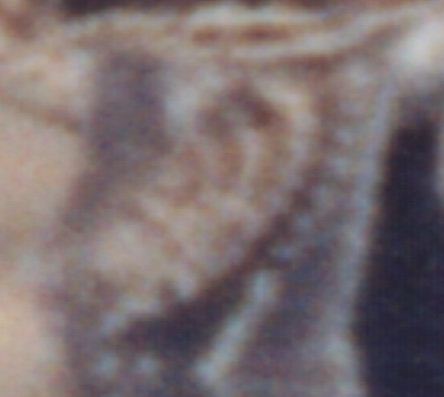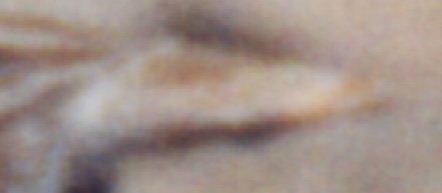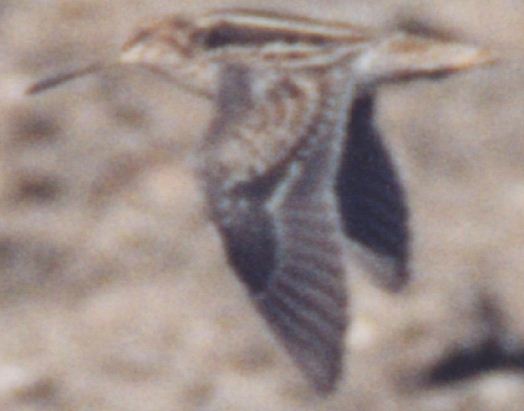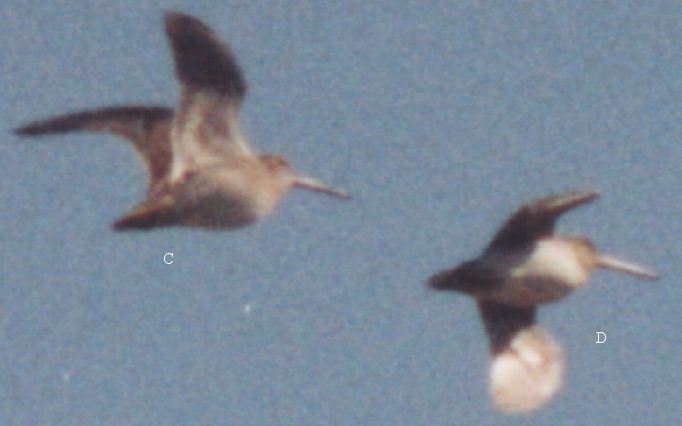



References for photos of G. media
in flight/with open wings (please email me with any others):
Chandler, R.J., North Atlantic Shorebirds, page 200.
Rosair, D, & Cottridge, D., Photo Guide to Shorebirds of
the World, page 141.
Gutiérrez,
R. Rare Birds in Spain website
There is an excellent comparative photo
by Arnoud Van den Berg in an issue of DUTCH BIRDING showing
the spread wing of media compared to gallinago (and
also how the tail of media can appear to lack white), but
I cannot find the issue right now.

In the same area soon after taking the above photo, I flushed
a flock of snipe to use up the film on flight shots, and got this
image; I cannot claim know if bird C is the same as the one in
the top image - but it was with the same group of birds. Note
how C is slightly larger than D, much shorter-billed, wider-winged,
and browner on the underparts - which are very heavily-marked
compared to D - a presumed delicata - at a similar angle
to the Sun (I feel that the pale in the greater underwing coverts
is perhaps reflective, rather than due to pale feather coloring?):

This bird has puzzled me ever since I saw the photo, but I've
only just realized, in going back through the photos, that I just
possibly photographed the same bird earlier (i.e. the top image.)
I'm not saying it's a Great Snipe, but I am rather surprised at
how suggestive it is; if this is a delicata, I wonder what
would be made of it in Western Europe, were it seen in flight?:
